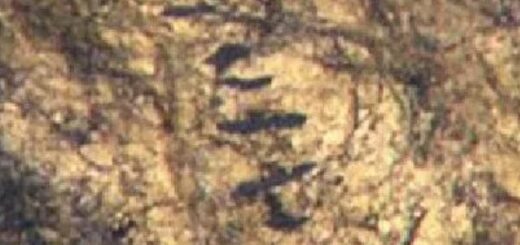Easter Island discovery: Experts shed new light on the mystery of the civilization’s ‘collapse’

Experts are shedding new light on the demise of the civilization that built the famous statues on Easter Island.
It has long been thought that the construction of the statues, or moai, ended around 1600, following a major collapse in the island’s society. New research, however, suggests that the society did not collapse before European contact in the early 18th century and the local population continued to build the statues for longer than previously thought.
Around 900 statues dot Easter Island.
EASTER ISLAND DISCOVERY: EXPERTS SOLVE ANCIENT MONUMENTS MYSTERY
The study, which is led by Robert DiNapoli, a doctoral student at the University of Oregon, included researchers from Binghamton University, State University of New York, the University of Arizona and the International Archaeological Research Institute.
Carl Lipo, an anthropologist at Binghamton University, says that the research challenges previous theories on the island’s societal collapse.
“Our research flies in the face of this narrative,” he explained in a statement. “We know, of course, that if we are right, we really need to challenge ourselves (and the archaeological record) to validate our arguments. In this case, we thought to look carefully at the tempo of construction events associated with large platforms.”
By using radiocarbon dating, studying rock layers and a range of historical records, researchers analyzed the onset, the rate and the end of the monument construction period.
MYSTERY OF EASTER ISLAND’S ‘MOAI’ UNRAVELED BY NEW DISCOVERY
The Easter Islanders began constructing the statues shortly after they arrived on the island in the 13th century, according to the study. The rate of construction increased rapidly between the early-14th century and the mid-15th century. Experts also that found a “steady rate of construction” continued after the first European contact with Easter Island in 1722.
“What we found is that once people started to build monuments shortly after arrival to the island, they continued this construction well into the period after Europeans arrived,” said Lipo. “This would not have been the case had there been some pre-contact ‘collapse’— indeed, we should have seen all construction stop well before 1722.”
“Once Europeans arrive on the island, there are many documented tragic events due to disease, murder, slave raiding and other conflicts,” Lipo added. “These events are entirely extrinsic to the islanders and have, undoubtedly, devastating effects. Yet, the Rapa Nui people — following practices that provided them great stability and success over hundreds of years — continued their traditions in the face of tremendous odds.”
MYSTERY OF EASTER ISLAND’S ‘MOAI’ UNRAVELED BY NEW DISCOVERY
The study is published in The Journal of Archaeological Science.
The remote Pacific island, located more than 2,000 miles off the coast of Chile, continues to be a source of fascination for historians.
In recent years, experts, including researchers from Binghamton University, have been unlocking the secrets of the mysterious ancient monuments on Easter Island.
EASTER ISLAND CONTROVERSY: ISLANDERS WANT BRITISH MUSEUM TO RETURN ‘STOLEN FRIEND’ STATUE
The famous statues, or moai, are supported by monumental platforms called ahu. Researchers, however, have long wondered why the monuments were placed in specific locations on the island.
Researchers had already identified groundwater discharge in coastal areas as a key factor in the statues’ placement on Easter Island’s coast.
EASTER ISLAND MYSTERY SOLVED: HOW HUGE STONE ‘HATS’ WERE PLACED ON FAMOUS ANCIENT STATUES
In 2017 researchers worked out how ancient islanders were able to place massive stone hats on the statues.
In 2016 research conducted on artifacts from the island questioned the theory that the ancient civilization there was destroyed by warfare.
Experts, also from Binghamton University, studied hundreds of ancient items found on the shores of Easter Island. Previously, the artifacts were thought to be spear points, but analysis reveals that they were likely general-purpose tools.
EASTER ISLAND ARCHAEOLOGY PROJECT DIGS UP ISLAND’S SECRETS
Carved from obsidian, or volcanic glass, thousands of the triangular objects, known as mata’a, litter the surface of the island.
Some scientists have estimated, that, at its height, Easter Island’s population may have been as high as 20,000, but fell over centuries after the island’s trees and palms were cut down to build canoes and transport its famous giant statues. One theory suggests that the deforestation led to soil erosion, impacting the island’s ability to support wildlife and farming, and the collapse of its civilization.
When the Dutch arrived at the island in 1722, its population was 3,000 or less. Only 111 inhabitants were living on Easter Island by 1877.
However, other experts have questioned whether Easter Island ever supported a large population, citing instead the arrival of Europeans, who brought diseases and took islanders away as slaves.



 Creators of mankind
Creators of mankind Description of “Tall white aliens”
Description of “Tall white aliens” Where they came from?
Where they came from? About hostile civilizations
About hostile civilizations The war for the Earth
The war for the Earth “Tall white aliens” about eternal life
“Tall white aliens” about eternal life Video: “Nordic aliens”
Video: “Nordic aliens” Aliens
Aliens Alien encounters
Alien encounters The aliens base
The aliens base UFO
UFO Technology UFO
Technology UFO Underground civilization
Underground civilization Ancient alien artifacts
Ancient alien artifacts Military and UFO
Military and UFO Mysteries and hypotheses
Mysteries and hypotheses Scientific facts
Scientific facts


















